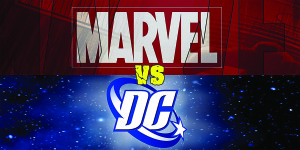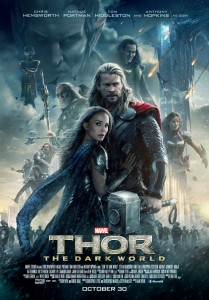Superhero movies have enjoyed an enviable run the last several years at the precipice of popular culture. Their prevalence in the mainstream, especially as of late, has been attributed to the use of serialization as Marvel’s and now DC’s method of organizing their release schedules. Both studios have taken a variety of comic book properties and put them all under one roof, building what is referred to as a “Shared Universe”, where each individual franchise is able to stand alone to be enjoyed on its own merits while simultaneously feeding into the stories of others, contributing to the development of an overall joint-storyline.
 This is nothing new for Marvel. They kicked off the serialization boom in 2008 with the release of Iron Man and The Incredible Hulk, the first two additions to their “Cinematic Universe”. Even that early on, their first several films alluded to a promise of something great on the horizon. They hinted at some event that in a pre-Avengers world would have been difficult to imagine. Many on Marvel’s current roster of superheroes would be completely unknown to the average person ten years ago (Ant-Man? Star Lord?) further highlighting their ability to make great movies regardless of who’s attached to the project. Marvel’s most worthwhile endeavors have also been their riskiest ones.
This is nothing new for Marvel. They kicked off the serialization boom in 2008 with the release of Iron Man and The Incredible Hulk, the first two additions to their “Cinematic Universe”. Even that early on, their first several films alluded to a promise of something great on the horizon. They hinted at some event that in a pre-Avengers world would have been difficult to imagine. Many on Marvel’s current roster of superheroes would be completely unknown to the average person ten years ago (Ant-Man? Star Lord?) further highlighting their ability to make great movies regardless of who’s attached to the project. Marvel’s most worthwhile endeavors have also been their riskiest ones.
DC has been trying the same thing. Having seen the overwhelming critical and financial success of Marvel’s Cinematic Universe, it was inevitable they would want to attempt something similar. But while Marvel had years to grow their universe organically, refining their filmmaking formula with each release, DC has been stuck playing catch-up. Results thus far being relatively lackluster.
Marvel isn’t at all superior to DC in terms of source material. Christopher Nolan’s Batman films are some the best that the genre has to offer (DC!). While their grittiness and darker tone worked for them, Marvel has instead built its track record on films that may appear more light-hearted by comparison. It doesn’t mean they don’t also explore dark thematic content but composition-wise, their releases are a stark contrast to the dourness of something like The Dark Knight. Marvel’s films feature larger-than-life characters, sharp, witty dialogue, vivid set pieces and explosive action scenes. Guardians of the Galaxy, Captain America: The Winter Soldier, and the Avengers films have closely embodied this formula but deviated from it enough to make each distinct in its own right, achieving excellent results.
Man of Steel and Batman v. Superman: Dawn of Justice certainly have positive qualities. They are suitably cast, well-acted, and look great on a technical and aesthetic level. However, when it comes to telling a simple, compelling story, DC falters. To be fair, their shared universe project currently has only those two films in its body of work but their common thread, director Zack Snyder, seems unlikely to be able to move either franchise forward in any meaningful way.
Snyder’s frustrating tendency to over-prioritize visuals and special effects while neglecting things like script and character development continue to hurt these films. The unfocused structure of Man of Steel and Batman v. Superman and the uneven pacing throughout are problems not even unique to DC. Repeated viewings of Iron Man highlights how slowly the plot can drag in the second act and how it leaves the story out to dry. The difference is that while Marvel’s films have their issues, their sense of humor, script, visuals, and characterization are usually enough to counterbalance the negatives. DC’s first two films may be truly cinematic, but their lack of heart and substance prove to be the biggest hindrance to their quality.
All the best superhero movies, the ones that leave an impression are the ones that speak to the heart and not the eyes. It’s cutesy, but it’s true. I may use a still from Man of Steel as my phone’s wallpaper because it looks good but I don’t own the movie on DVD. Between that and say Guardians of the Galaxy which one would you want to watch again? Hopefully choosing between Marvel and DC won’t always be this easy.

